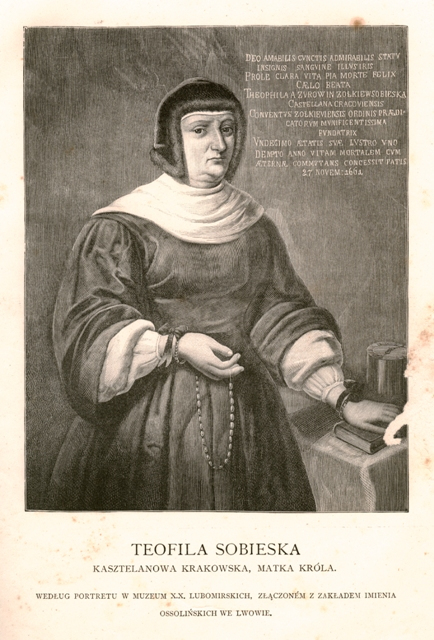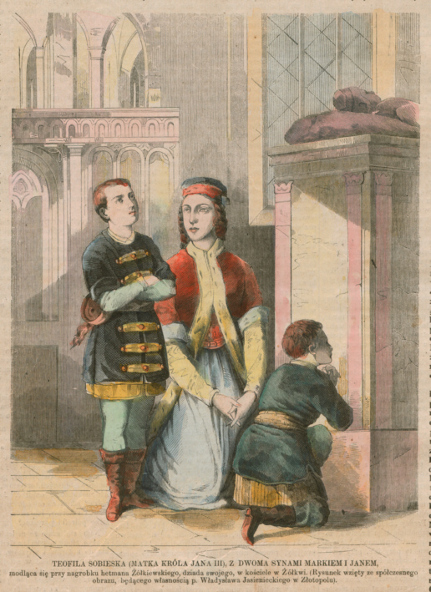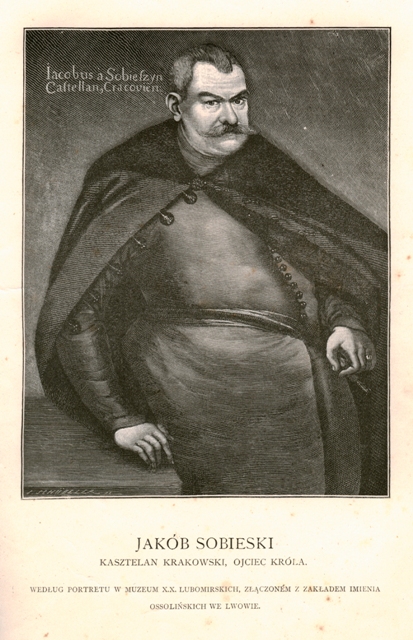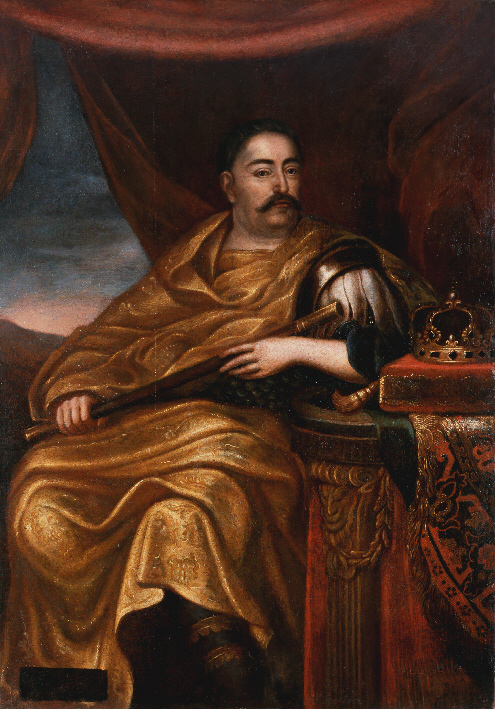Teofila Zofia née Daniłowicz (1607–1661), daughter of Voivode of Russia Jan and Zofia née Żółkiewska, was born in Żurów. Already in her early years she showed extraordinary courage and fearlessness, which were rare qualities in contemporary women. At the age of 17, with her mother Zofia and her grandmother Regina née Herburt, she took command of servants to repel the attack of Tatars on Olesko. In May 1627 in Żółkiew she married Jakub Sobieski, widowed Crown Royal Cupbearer, contributing with her dowry all former possessions of the Żółkiewski family and some of the Daniłowicz family in addition to two houses in Warsaw and a collection of family valuables. With her husband and the entire court she resided in Żółkiew, taking care of her children. Of seven offspring only two sons, Marek and Jan, and one daughter Katarzyna grew up to be of age; the rest of her children died young.
Known for her strong, almost manly character, full of energy and initiative, Teofila Sobieska assisted her husband in administration of the vast estate. The Sobieskis’ court in Żółkiew was driven by the worship of Hetman Stanisław Żółkiewski, Teofila’s grandfather; the family-owned castle was filled with his memorabilia. In her husband’s absence and later following his death, Teofila ruled the city and the remaining property with an iron fist. She founded monasteries and churches, especially after a tragic death of her beloved elder son Marek (she felt less affection for the younger Jan). She took good care not only the family wealth but also of its splendour. In 1652 she prevented misalliance of Jan’s marriage to a beautiful daughter of Chief Steward Paweł Orchowski (the girl was hastily married to a nobleman of her rank). She also opposed Jan’s relation with Marie Casimire d’Arquien. Domineering by nature, she pressed her daughter Katarzyna to reject affection to Dymitr Wiśniowiecki and instead forced her to marry Prince Zasławski-Ostrogski. In March 1653 Teofila embarked on a five-year-long pilgrimage to Italy. She died in Żółkiew in 1661, voicing the last wish to have a modest funeral. Meanwhile, raised by his grandmother and emotionally indifferent to his mother, Jan Sobieski organized two funeral ceremonies, one modest and another one sumptuous (February 1662), held in the Dominican church in Żółkiew. In June 1946 Teofila’s remains were transported from Żółkiew to Lublin and then to Cracow, where in 1983 they were buried in the crypt underneath the chapel of Our Lady of the Rosary, part of the Church of the Holy Trinity.
Teofila Sobieska’s oil portrait held in the Dominical church in Cracow was made by an anonymous painter from the Lviv or Żółkiew circle in 1652–1661 and depicts her in mourning following the demise of her beloved son Marek. The painting, know thanks to a number of painted copies with different inscriptions, was destined from the beginning for the Dominican church in Żółkiew. The mother of the king-to-be is represented down to the knee level, holding a rosary in her right hand while resting the left hand on a book placed on the table, next to a cylindrical clock. A quality graphic copy of the image is a woodcut by Andrzej Zajkowski made as an illustration for Józeł Łoski’s publication Jan Sobieski, jego rodzina, towarzysze broni i współczesne zabytki [Jan Sobieski, his family, comrades-in-arms, and contemporary monuments] (Warszawa 1883).
Andrzej Zajkowski, based on a painting by an anonymous Lviv or Żółkiew painter from 1652–1661: Portrait of Teofila Sobieska née Daniłowicz, woodcut, publ. 1883.



